Eggs are fascinating. We use eggs daily and yet most of us never stop to consider the anatomy of an eggshell. There is so much to learn about eggs that we have actually broken this unit into several labs.
I love science labs that use items around the house, especially if that item can be used in many different ways to explain the world around us.
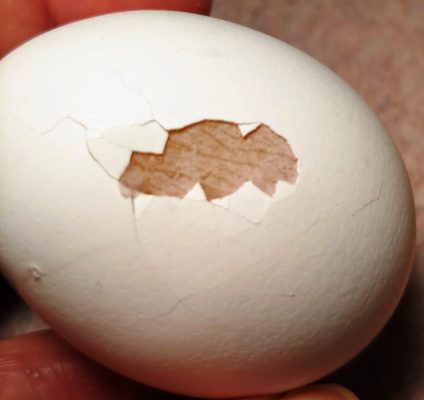
Lab Items Needed:
- One egg (A few on standby might be reasonable!)
- A small plate
- Magnifying glass
- Download the lab sheet.
The Egg Anatomy lab sheet is meant to be used with parts 1 and 2 of this lab. Word cut-outs are included on page two for reluctant or early writers.
Andrew’s Instructions on How to Crack an Egg
To crack an egg, whack it on the counter, but not too hard because it will break! If this happens, clean it up and get another egg! You might want to pick tiny pieces of shells apart and if you do this, you will see the thin membrane underneath. But what you really want to do, is put two thumbs where the shell is cracked, push gently, and pull apart. Make sure you do this over the plate! Mom’s are never happy when they have to clean up raw egg. It is also important to make sure that the egg yolk doesn’t break.
*Parents, take a deep breath because it is hard to watch a youngster crack an egg! It easier for the adult to do this step but in essence, it is also part of the learning experience.
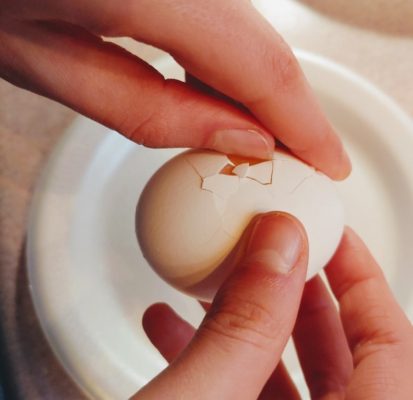
The Anatomy of the Egg Shell
Using your magnifying glass, take a good look at the shell. It is made of small crystals called, “calcium carbonate“. It is hard and durable because its job is to protect the chick. If you look very closely, you can see the little pores. Now, slide the magnifying glass over to your arm to look at your skin. Just like the egg, your skin has pores too!
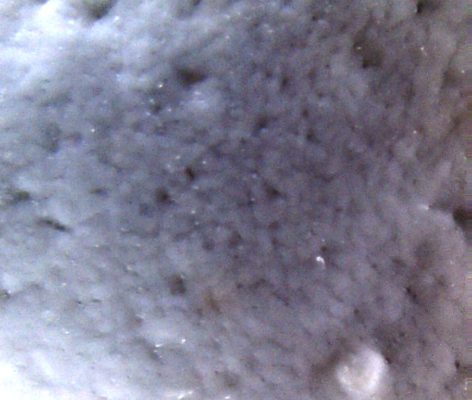
The little pores on the egg are important because they allow air and moisture to pass through to the egg. (On your skin, the pores produce moisturizing oil.) The anatomy of an eggshell includes a thin coating on top of the egg called a ‘‘Cuticle“, which is also known as the “Bloom“. It coats the egg and the pores to keep bad bacteria out.
The Outer and Inner Membranes
There are layers located just under the shell called the outer and inner membranes. Notice that they are soft and look like paper. These two membranes are an added layer of defense against bacteria. They are made of a strong protein called keratin. The membranes also keep the egg from evaporating, or from drying out. On your lab sheet, we refer to these as the “shell membranes”.
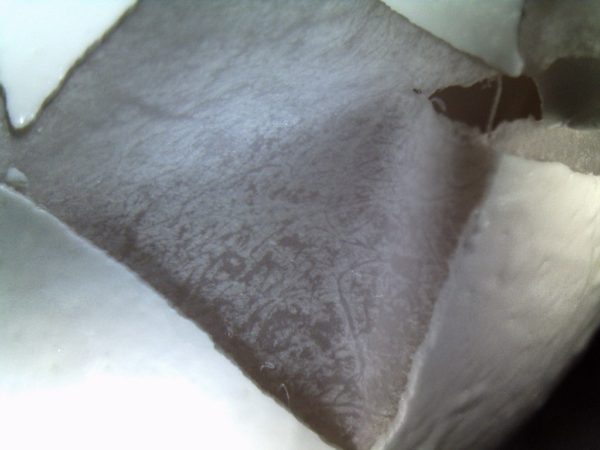
The Air Cell
Can you find the air cell on the large end of the shell? When you do, you can poke it gently with your finger. It is just like a little pillow!
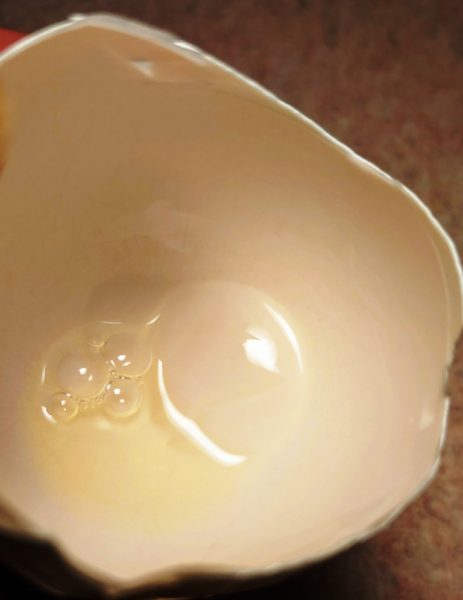
little pillow of air, called an “air cell”.
The “Air Cell” is a little pillow of air that forms when a newly laid egg cools. If you want more science about how cooling liquids contract, see the vocabulary section below. The contraction of the cooling liquid inside the eggs, causes the little air cell to form at the larger end. When you eat a hard boiled egg and you notice a crater or flat end on the egg, you will know that this is where the air cell was.
Watch an Egg Laid
Want to see a chicken lay an egg? It is really cool. At 2:20 into the video you can watch the egg dry and the color change. It dries quickly because the liquid is still warm on the inside. If the farmer collects the egg, then the contents inside cools and the air cell will form.
Wait! Don’t Toss the Shells!
There are a lot of uses for egg shells so don’t throw them away!
You can wash and dry the shells and store them in a container over the winter. (Seriously, there is no smell!) Smash them up (this is fun) and use them for fertilizer in the garden, or under the mulch. Calcium carbonate is good for the soil and it reduces the acidity.
You can also use shells as seed starters. Sprout seeds in a half of shell. Set cartons of sprouts, side by side, in a sunny window. When it is planting time, plant the shell and the seedling in the garden.
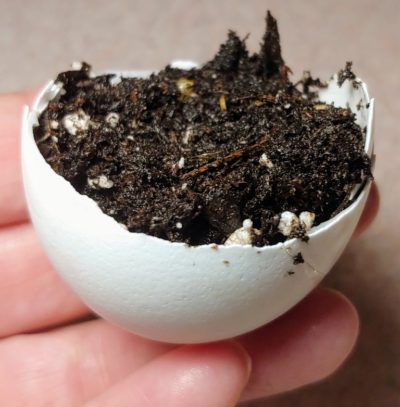
Worms like eggshells too! Calcium Carbonate is good for them and the worms are good for your garden and landscape. When you finish with your egg labs, cook the contents but don’t throw the shells away!
Lab Vocabulary
- Calcium Carbonate – A chemical compound made of calcium, carbon, and oxygen. The main component of marine shells and eggshells.
- Pores – tiny holes on an eggshell.
- Cuticle or Bloom – a thin, outer coating that keeps bacteria and dust from entering an eggshell.
- Membranes – a thin flexible layer that can be protective.
- Bacteria – a small organism that can be good or bad. Good bacteria breaks down matter like leaves and wood. Some bacteria, can be harmful and can cause diseases.
- Keratin – A strong protein that hair, shells, hooves, and fingernails, to name a few, are made of.
- Air Cells – Small space of air between the membrane and the eggshell.
- Molecules – Anytime two atoms join together they create a molecule. Everything is made up of atoms and molecules. They are called ‘building blocks’.
When molecules become cold they stick closer together – just like you do when you are shivering and you wrap your arms around yourself.
The warmer the liquid, the more space there will be between molecules. During a hot day, you don’t want to be too close to anyone either! - Contract – Shrink or decrease in size.
- Expand – To enlarge or increase in size.
Note:
Warm liquids expand because the molecules become active and spread apart. The cooled liquid will cool and contract, or shrink, because the molecules slow down and move closer together. When the hen lays an egg, the temperature of that egg is the same hen’s body temperature. Once it is outside the hen, the egg cools and the contents inside the egg contracts or shrinks because the molecules slow down. This leaves a space at the end of the egg and creates the air cell.
Find the next lab, The Anatomy of an Egg, Part II.
We love comments and encouragement. Just remember: This is a safe site for children. If comments are not tastefully stated, they will disappear in a “POOF”!
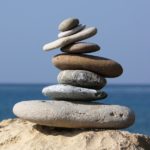


marcie a phelps says
This is so cool! I love all the information! I learned as well as my daughter. Thank you!
Danielle Warmuth says
Your welcome! I read the article. Do you plan on taking Master Mentalism? You’ll have to let me know who you impress with the floating ball lab!